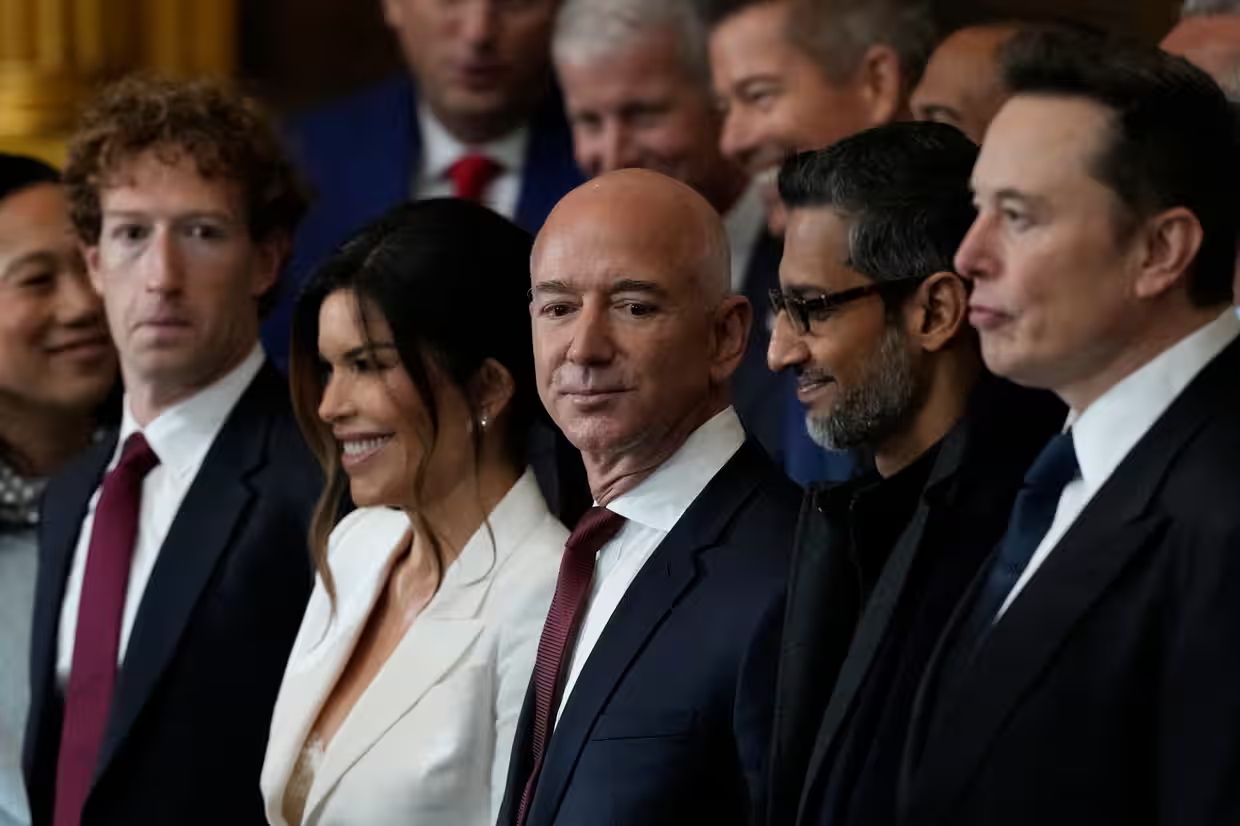I. “…on the basis of sex…”
“Well, I guess I’m not going to become a lawyer then,” my daughter declared after observing a mock trial I participated in. “Why would you say that?” I asked. “Because I’m not white and I’m a girl.”
Not exactly what I was going for when I invited her and my boys, in bring-your-kid-to-work day spirit.
What should trouble us all is the fact that my daughter is quite possibly the last high school student in the world who should think she can’t compete with the boys in any arena. Her academic performance borders on the absurd. And she started for her boys varsity high school basketball team and soccer teams that year,1 serving as team cocaptain for the latter this year.
The sad reality though is she quit basketball. Hung ‘em up, giving up her chance to play for her school during her now senior year. Had nothing to do with any physical disadvantage playing with the boys. And it sure as hell didn’t have anything to do with any concerns about her “physical safety.”2
It had everything to do with the similar sort of gender discrimination that she observed during my mock trial, where a very “old boy” directed an overtly sexist critique at my co-counsel, an experienced and excellent practicing attorney. That act was rooted in a history of a sort of institutional discrimination that the legal world has successfully mitigated-in-part over the past half-century-plus but has not entirely left behind.
In comparison, algorithmic discrimination from the implementation of AI is a next-level threat. It is an institutional X-ism generating agent, if—and from all indications, when—it is or will be left to its own devices.3

Can we get the group “Do-Not-Regulate-Us” rate, please?
II. “R-E-S-P-E-C-T. Find out what it means to me….”
“Basketball respect” from referees is defined as the benefit of the doubt for foul calls.
My daughter got no respect from the refs. I’m not suggesting this was a conspiracy. I doubt there was any malice or even consciousness on the part of any individual referee.
Basketball is one of the hardest sports to ref. It is a fast-paced, high-contact sport. You could—but of course can’t—call a foul on every single play. A lot of calls aren’t made based on what actually happens, but rather often on what the ref anticipates will happen based on whether a particular play tracks certain patterns associated with a foul call. If you look the part and put yourself in a situation where fouls are often called, you will often get the call before it happens. And if you just don’t look the part, you often won’t get the call even if it happens. A great example of this is the much-maligned bigger, slightly awkward kid who gets fouls called on them all the time just because they are standing in the vicinity of the ball, independent of making any actual contact with the ballhandler.
Hence the problem. Maddie does not and will never look the part of a boys varsity basketball player. In a sport where ref’ing is exceedingly subjective, she simply was never going to get a fair shake. Don’t believe me?
[cont’d ↗]
“Never foul the jump shooter, unless it’s a girl…“


Self-schedule a free 20-min. video or phone consult with Jim W. Ko of Ko IP and AI Law PLLC here.
III. The Old-Boys’ Network 2.0: Discrimination in the Age of AI
“I just want to say that I’m not racist. I don’t even see race. Not even my own. People tell me I’m white and I believe them…” Stephen Colbert
A. The glass ceiling endures: Progress without parity
First, if you don’t believe the “old-boys’ network” still has a presence in the practice of law or in business in general, you’re simply kidding yourself.
I wholly acknowledge and applaud the fact that there are more opportunities for women and minorities today than there were in decades past.

But based on the quality of the current public discourse on the subject matter alone, it’s clearly not the time to unfurl the “Mission Accomplished” banner just yet. The disproportionately few C-Suite members that are women and/or minorities to this day firmly establishes otherwise.4
B. AI is a poison for sure…
Let’s use my daughter’s basketball video to provide an admittedly simplistic illustration of the perils of relying on AI to referee a basketball game.
If, e.g., the AI trained solely on this video and the AI were to develop its referee model focused solely on physical contact, the resulting AI ref would, amongst other things:
- Never call a foul when a defender runs/jumps out under the shooter, not allowing the shooter to land.
- Never call a foul when a teammate blatantly holds a defender to set a screen for a shooter.
- Always call a foul when a defender is in the vicinity and the ballhandler falls down.
- Never call a foul when a defender does a chasedown on a breakaway and absolutely mauls the person driving to the basket for a layup.
If, however, the AI is allowed to develop its referee model using “alternative data”—i.e., data that does not on its face have anything to do with a basketball foul but may somehow be correlative with if/when basketball fouls are called—then, well, the sky’s the limit. Taking, e.g., the last example:
4. Never call a foul when a [male] defender does a chasedown on a breakaway and absolutely mauls the [female/long-haired/Asian/undersized/stoic, etc.] player driving to the basket for a layup.
Now, obviously this is a bit of an artificial construct, as I created the video to compile certain perceived injustices.
But while increasing the sample size of the training data used, using full game video, etc. would unquestionably regress toward the mean, what if the simple reality is that discrimination against, e.g., female, Asian basketball players by basketball referees just happens? Well, AI left to its own devices is designed to replicate the decision-making made by whatever sample of human referees it is trained on in real life. This will include by default whatever prejudices they may collectively exhibit, whether consciously or unconsciously.
Parting thoughts: From systemic to autonomous discrimination?
Algorithmic bias is endemic, because the data AI is trained on is inherently biased. Left to its own devices, it threatens to serve as the perfect sexism and racism institutionalization tool, perpetuating the very discrimination that is baked into the data it is trained on.
But is all this inevitable? Or can the negative impacts be mitigated, or even eliminated? Or even more, can AI, if properly implemented, actually serve as a net positive with regards to discrimination in general, or even significant reduce if not eliminate discriminatory effects entirely? Let’s further explore next week [for Part 2 of 2 of this article, click here].
© 2025 Ko IP & AI Law PLLC
- Our charter high school does not field a varsity girls’ basketball or soccer team. ↩︎
- So, so much hand-wringing over the transgender athlete issue. Questions concerning competitive fairness are complicated and there are some reasonable arguments on both sides. But I come down firmly on the side of: “just compete harder.”
As you have no choice but to do against girls who are blessed to be born with comparable physical attributes. I have no doubt that the vast majority of transgender girls may well fall within the top half. And yet I also have no doubt that they still fall within the range of abilities of those of natural born girls, and don’t even come close to being comparable to those of natural-born boys anymore due to their lowered testosterone levels (and FYIs, having lowered testosterone levels is the general requirement for participation for transgender youth in, e.g., NCAA women’s athletics).
Questions concerning “safety” strike me as simply disingenuous. Do I worry my daughter might get hurt playing basketball against bigger, stronger, and faster boys? Of course. Soccer even more so. But this is simply part and parcel of the risks inherent in competing in athletics in the first place.
Any resultant inequities in individual cases may simply be a cost of doing business for our humanity. We have in many instances a legal obligation—and in all instances a moral obligation—to treat all human beings like human beings. In particular transgender youth, who are probably the most vulnerable human beings among us.
Concerns over girls potentially losing athletic scholarship opportunities to transgender youth with such physical advantages are entirely understandable. But we would all do well to remember that any “right” to a scholarship derives from Title IX of the Civil Rights Act which states:
No person in the United States shall, on the basis of sex, be excluded from participation in, be denied the benefits of, or be subjected to discrimination under any education program or activity receiving Federal financial assistance.
And the Civil Rights Act itself derives from the 14th Amendment of the Constitution, which states that:
No State shall make or enforce any law which shall abridge the privileges or immunities of citizens of the United States; … nor deny to any person within its jurisdiction the equal protection of the laws.
Any “right” you have to pursue an athletic scholarship is not rooted in the fact that you are a girl; it is rooted in the fact that you are a human being. As are transgender youth, who should not and simply cannot be wholly denied that same opportunity under Title IX or the Constitution. No Executive Order can trump our Constitution.
[4/20/25 update: For an extraordinary report on trans athletes, see John Oliver, Last Week Tonight (Apr. 12, 2025), https://www.youtube.com/watch?v=flSS1tjoxf0.] ↩︎ - States? It’s your move…. ↩︎
- While women’s representation has increased at every level of corporate management over the past decade, “[w]omen remain underrepresented across the pipeline, a gender gap that persists regardless of race and ethnicity.” Women today “make up 29 percent of C-suite positions.” This is significant improvement from just 17 percent in 2015, but “progress has been much slower earlier in the pipeline, at the entry and manager levels.” McKinsey & Co., Women in the Workplace 2024: The 10th-anniversary report (Sept. 17, 2024), https://www.mckinsey.com/featured-insights/diversity-and-inclusion/women-in-the-workplace?utm_source=chatgpt.com. ↩︎

Leave a Reply